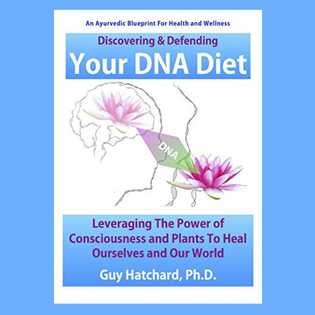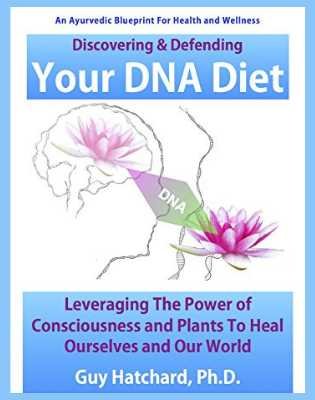Sometimes the veil is lifted and you get a glimpse into what our government is planning for us in the future.
On Monday Prime Minister Luxon was asked by RNZ if the government was planning to reduce sick leave entitlement from ten days per year to five. He didn’t rule it out, instead replying; “Look, that’s something that I know Brooke van Velden is looking into as she looks at a whole raft of workplace relations so it’s a bit premature for now.” Ms Van Velden is deputy leader of the ACT party and Minister of Internal Affairs and Workplace Relationships. Although a denial of imminent action was later issued, Luxon had let slip the trend of government planning.
At the Ministry of Social Development for example the average number of sick days taken by employees was 12 days in 2021 (year to 30 June), 13 days in 2022, and 15 days in 2023 and 2024. The comparable figure for 2019 was 4.7 sick days. In other words, in some sectors, rates of sickness have tripled among working age people since 2019. Let’s unpack what this means for the future direction of our nation.
Damning insurance statistics
Why are people taking more sick days off work? Apparently the government believes that the increases are the result of people becoming work shy. As a result they have been considering halving paid sick leave entitlement, but the correct answer is very simple: more people are unwell and the numbers are unprecedented.
The Annual Results Summary by Southern Cross insurers up to 30 June 2024 reports that in 2019 33% (one third) of its members made a health claim under their policies. In 2024, 50% (half) claimed. That represents a whooping 50% increase in sickness or to put it more starkly, 158,000 more sick Southern Cross clients. Since Southern Cross only covers 20% of the New Zealand population, this figure scales up to a massive 788,000 more sick Kiwis in 2024 compared to 2019. That is an extra 15% of the population getting sick in 2024 who wouldn’t have been ill in 2019.
The surge in Southern Cross health claims in 2024 led to an $88 million dollar loss despite the fact that their health insurance premiums rose by 9% for the year. The loss was due in part to claimants suffering more serious illness requiring more expensive medical interventions than before. Surgical procedures were up 8% and specialist appointments up 7.2%.
National health care is in crisis
Here in New Zealand and elsewhere governments are busy keeping the details out of public view, but data released by the British Heart Foundation spells out the crisis in stark terms. Deaths from heart disease (the leading cause of death) are rising for the first time in 50 years, according to the British Heart Foundation (BHF). The proportion of adults of working age dying from heart disease has risen by 12 per cent since 2020. This is a reversal of a long-standing downward trend and marks the first significant rise in deaths from conditions such as stroke and heart attack in a generation, the charity said. Bryan Williams, an NHS consultant physician and chief scientific and medical officer of the British Heart Foundation, said:
“There are now around 420 deaths per week from heart disease and stroke, which is horrific. It has set us back 10 or 15 years in terms of the progress we had been making.”
Comparable official figures for cancer (the second leading cause of death) have so far not been made available past 2022, but reports from leading cancer specialists in the UK and USA point to a similar recent surge in cases, nullifying the previous trend of improved cancer outcomes.
It all began in 2021
The implications won’t be lost on my readers if I note that the rise in serious disease rates began in 2021. The latest available 31st March 2025 Stats New Zealand All Cause Deaths data for New Zealand shows that the rate of deaths per 100,000 population is still 4.2% above the pre-pandemic average which represents 1,400 excess deaths per year which are not predicted by the pre-pandemic trends. This is more than four times the annual death toll from road accidents in New Zealand, more than the annual global death toll from aircraft accidents and more than the current casualty figures in Tehran, all of which are rightly absorbing concerned media attention.
In contrast, governments and the media continue to ignore a global disease epidemic which is affecting working age people, families and stretching health services past their elastic limit. The media is sensationalising the human tragedies involved, but it’s not considering the possible causes. The real cause should be obvious. The year 2021 speaks loudly, but its voice is falling on deaf ears. Whether COVID-19 infection or COVID-19 vaccines are at fault is immaterial, the massive continuing death toll is the result of biotechnology experimentation.
As Bob Dylan reflected in his song Hard Rains are Going to Fall, we are living in times where “the executioner’s face is always well hidden.. where souls are forgotten”
New Zealand was one of the first nations in the world to implement and fund a national health service beginning in 1938. Our present government appears to be building a callous disregard for health into our health service. Sweeping some self evident truths under the carpet as they point the finger of blame at the population itself, labelling the whole country work shy. Or, as they are doing at ACC (the Accident Compensation Commission which insures all Kiwis), instituting a policy of denial. The ACC is routinely mislabelling vaccine injury claims as caused by an until now little known medical term “Functional Neurological Disorder” and then denying liability for life altering neurological symptoms that appeared in thousands of people after COVID-19 mRNA vaccination (read more about this here). The massive global death toll, which should have been laid at the feet of biotechnology, amounts to tens of millions of lost souls whose fate is being ignored, a number still growing daily.
So where are governments placing their trust and what are they investing in on our behalf?
An article in the UK Guardian is entitled “AI boom means regulator cannot predict future water shortages in England“. Datacentres for AI are a pivotal part of the UK government’s growth strategy. PM Keir Starmer announced this year that he would hugely increase AI capacity and reduce planning restrictions on companies that wanted to build datacentres by setting up “growth zones” with fewer constraints. These giant banks of computer chips over heat rapidly and require constant cooling to prevent the servers failing which uses up water. So much water that UK citizens may have to go thirsty as a result.
One study estimates that global AI could account for up to 6.6bn cubic metres of water use by 2027 – the equivalent of nearly two-thirds of England’s annual water consumption. The UK Environment Agency chairman, Alan Lovell, told the Guardian: “The nation’s water resources are under huge and steadily increasing pressure. This deficit threatens not only the water from your tap but also economic growth and food production.”
AI, like our politicians. speaks with assurance on topics about which it knows almost nothing, distorting the whole field of knowledge
At some point while writing this article I wanted to check my understanding that New Zealand was indeed among the first to implement a national health service. I asked Google and its AI summary replied (and I quote in full):
“No, New Zealand was not the very first country to establish a national health service. While it was one of the first to implement a universal, tax-funded healthcare system in 1938, the United Kingdom had already introduced the National Health Service (NHS) in 1948.”
I don’t wish to mock progress, but is this the fruit of billions of dollars of government and private investment? Is this what we are going to sacrifice our economy and food supply for? We are able to realise that 1938 came before 1948 without too much trouble and the water supply requirements of our human brains are minimal indeed. Just as we can see that a tsunami of illness starting in 2021 has something to do with the global rollout of a novel biotech vaccine.
A NY Times article is entitled “They Asked an A.I. Chatbot Questions. The Answers Sent Them Spiraling.” It reports “conversations with AI technology can deeply distort reality.” People are going mad a a result. In one example reported by the Times, “a Mr Torres thought of ChatGPT as a powerful search engine that knew more than any human possibly could because of its access to a vast digital library. He did not know that it tended to be sycophantic, agreeing with and flattering its users, or that it could hallucinate, generating ideas that weren’t true but sounded plausible.” The article continues to document how his AI conversation led him to spiral into delusional mental illness.
Since the April 1968 release of 2001 A Space Odyssey and the November 1977 release of Star Wars we have been offered an unrelenting diet of futuristic technology controlled by computers in which severely ill or injured people are brought back to health better than before. It has become accepted orthodoxy to pretend that some kind of miraculous technological age of health, happiness and longevity is just around the corner. I profoundly disagree for what seems to me to be a very obvious reason—at the root of every technological advance and scientific understanding there is a human mind. If we do want a bright future, the technological frontier we need to cross is that of consciousness which quite fortunately is very close to home, our own self.
Coming back home to the Self
We will not be the first to cross this frontier, nor the last. The history of the world throughout the ages records and honours high points of human achievement as exemplars of thinking and behaviour. Behind the stories of right thinking and moral behaviour, are personal heights of expanded and elevated consciousness. The burning question of our age is ‘How were these heights of consciousness reached?’ Circumstances are dictating the need for an answer to this question as never before in history. Without one we are doomed.
Fortunately the answers are not far away. Quantum Cosmology explains the emergence of space time and the universe itself as the result of the sequential interplay between observer, observed, and observer-observed relationship. Placing the organising power of the universe within the reach of the human mind, but of course out of the reach of any conceivable computer.
By its very nature the knowledge of consciousness can never be lost. Consciousness is self-illuminant. It knows itself. The rush of modern life is so overwhelming that our inner self is overshadowed, but it is only a matter of settling down in the silence of meditation for the reality of life to unfold itself to itself. The Gospel of St Thomas described the process as “a movement and a rest”. The organising power of the Cosmos is contained in the process of coming to rest.
The Bhagavad Gita, recorded over five thousand years ago in response to a global crisis which culminated in war, offers this simple formula for meditation.
“In this no effort is lost and no obstacle exists. Even a little of this delivers from great fear.” continuing, it advises the aspirant to dive within and reach the silent source of the material qualities which guide the relative world—known as the process of transcending.
With continued and repeated practice of retiring within, the deep power of transcendental silence clarifies itself in human awareness. As Wordsworth said “We see into the life of things” and participate in “the deep power of joy”. This is not an imagination but the permanent and lasting achievement of a life well lived.
There are many things to be known in life and many responsibilities to shoulder, but none among these can be achieved to their full extent without knowing the self, which is found to be the self of all. Paradoxically there is a great opportunity at this time of crisis to rise above it all. The global conflicts and confusion we are all now facing and will face in coming times can be met and resolved with the self by our side. Enmity and conflict with ancient roots can be resolved with an awareness of the self we all share. The courage to change and the power to make the right choices in the variety of circumstances we encounter as we journey through life is the fruit of self knowledge. This is the final truth about the unity of existence. It is within us all calling out to be realised and lived.
To find out more about transcendence and the research supporting its effects on health and happiness you may like to read my book Your DNA Diet.






